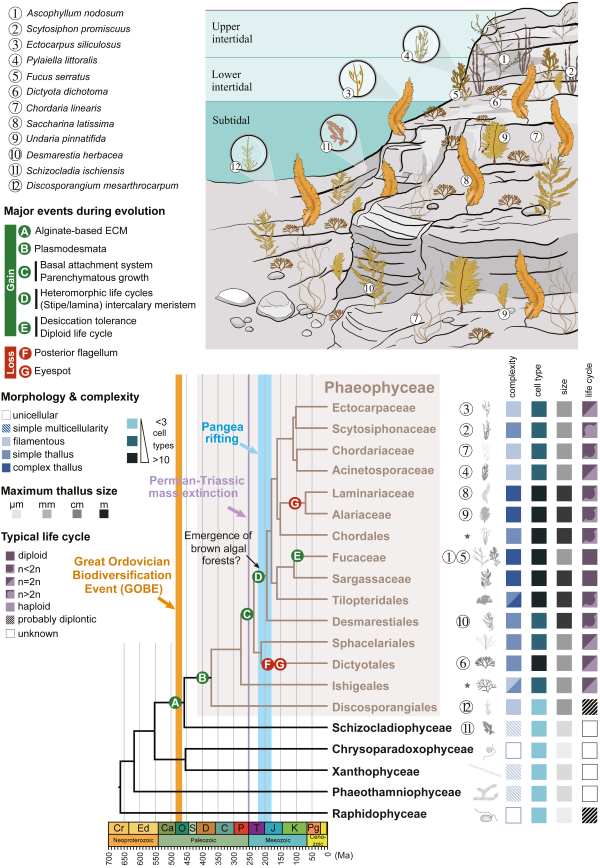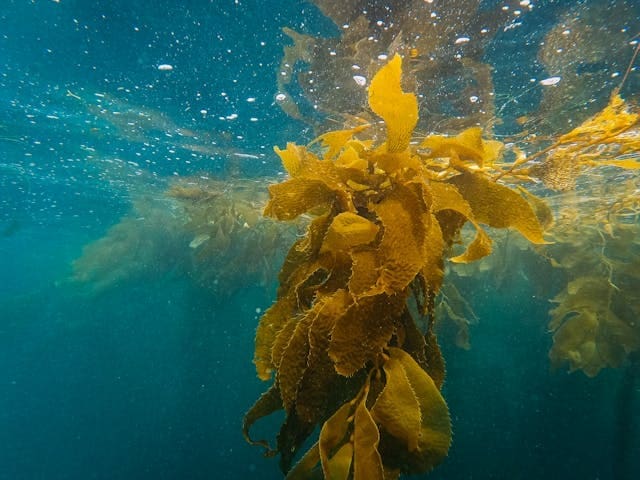Brown algae, an essential component of marine ecosystems, play a pivotal role in maintaining coastal habitats, supporting biodiversity, and combating climate change through carbon sequestration.
Despite their ecological importance, the evolutionary history of these algae has remained largely uncharted.

Researchers from Sungkyunkwan University have addressed this gap with a comprehensive genomic analysis of 44 brown algae species.
The study, published in Cell, sheds light on key evolutionary milestones and provides new genomic resources through the creation of the Phaeoexplorer database.
Lead author Professor Hwan Su Yoon explained the significance of this research, focusing on two pivotal phases in brown algae evolution. Approximately 450 million years ago, these organisms transitioned from unicellular forms to simple multicellular structures.
“This shift was driven by horizontal gene transfer from bacteria,” Yoon explains, “enabling the synthesis of vital cell wall components like alginate and phlorotannin. These adaptations allowed algae to aggregate, improved cell-to-cell communication, and defend against predators, marking a crucial evolutionary step.”
The study also highlights the diversification of brown algae around 200 million years ago, coinciding with the breakup of the supercontinent Pangaea. This diversification spurred the development of complex life cycles, advanced structures, and specialized metabolic pathways, which shaped the ecological roles of various species.
The researchers uncovered extensive viral integrations in brown algal genomes, finding Phaeovirus sequences in 67 of 69 genomes analyzed. These viral elements likely influenced both evolutionary trajectories and species diversity.
Beyond fundamental biology, the findings offer practical applications. In aquaculture, the research supports selective breeding of species like Undaria pinnatifida and Saccharina japonica, enhancing productivity and resilience against diseases.
The study also underpins advancements in biotechnology, including the production of sustainable biomaterials and bioactive compounds from brown algae.
The implications for climate change are equally significant. By examining how historical environmental shifts influenced brown algae evolution, the study provides a framework for predicting responses to future climate challenges.
“The genomic resources established from this research help identify traits that enhance ecological resilience,” Yoon states. These insights could inform efforts to develop algae capable of withstanding climate stresses, such as rising temperatures and sea-level changes. Moreover, brown algae’s role as a “blue carbon” reservoir positions them as natural allies in carbon sequestration and marine ecosystem restoration.
By decoding the genetic blueprint of brown algae, this study deepens knowledge of marine ecosystems and explores ways their ecological and economic potential could help address global challenges.
Journal Reference:
Denoeud, France et al. ‘Evolutionary genomics of the emergence of brown algae as key components of coastal ecosystems’, Cell 187 (24) 6943 – 6965.e39 (2024). DOI: 10.1016/j.cell.2024.10.049
Article Source:
Press Release/Material by Sungkyunkwan University
Featured image credit: Kindel Media




